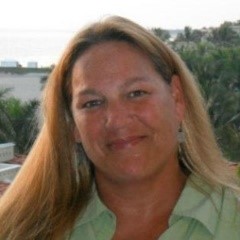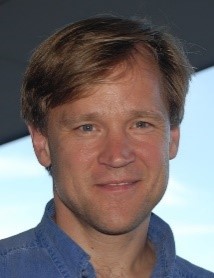
The modernization of grants management: Q&A GrantVantage
 Quanah Stamps, Quanah Stamps,CEO at GrantVantage, Inc. |
 Gordon Darling, Gordon Darling,CTO at GrantVantage, Inc. |
Grants management is a very rewarding job that, until recently, just came with manual tracking and massive administrative burdens. Days are spent tracking down information for audits, reconciling budgets with the finance teams, or writing detailed reports for funders. But modern grants management solutions exist that can alleviate these manual tasks, automatically tracking regulations and budgets in central databases and freeing time to focus on community development.
GrantVantage is a grants management solution that enables this tracking and gives project managers comprehensive visibility into all aspects of their grants. We sat down with two of the Co-founders of GrantVantage, Quanah Stamps and Gordon Darling, to learn more about the how modern grants management solutions can change the lives of grant professionals.
Quanah, as a former grant management professional who has worked on all sides of the grant approval process, what drove you to find a better solution to grants management?
Quanah: I have worked with Federal and state agencies, and nonprofit organizations both in the U.S. and abroad. I have been a funder of grants, grant recipient, portfolio manager, and have provided extensive technical assistance to state and local governments and nonprofit organizations receiving grants. Based on that experience, grantees struggle with three main struggles. The first is staff turnover. When employees rotate out, it’s difficult for managers to piece together the activities the individual was working on, especially with data stored in a variety of places. The second is demonstrating impact, as grantees have a difficult time tracking and analyzing data to show funders impact over time. The final struggle grant program managers face is tracking cash, expenditures, and available funds, especially when they need to allocate expenditures to grant objectives. In most organizations, the finance office tracks and reports primary summary expenditures, but program managers also track a detailed budget. This means two separate parts of the organization manage the same project but with a different purpose and view of the budget.
Gordon: One way project managers track their budgets is by using what’s known as a cuff account, an intermediary account to bridge the gap between what the financial system shows and the details of the funds managed by the grant project manager.
Quanah: Funders are investing in the grantee’s project plan, reasonableness of the budget, and the potential positive impact of their funds when they award grants. If the funder is a government entity, then policies, regulations, and reporting requirements are attached to the use of funds. Grants funds that are not spent as expected force government funders to close the grant with funding still available and no way to reprogram or reallocate the dollars to other projects. In my tenure, I spent months every year justifying my budget to legislators, appropriations committees, and the Office of Management and Budget. For me, closing a grant with funding still available was difficult and disheartening.
What changes in the last five years have made it possible to implement more robust management solutions?
Gordon: The trend towards the cloud and digitization. We’ve still got users who are oriented to the old paper way, so we’ve worked to make our tool super simple to use, and that’s essential to our success.
Quanah: We’ve come a long way from the first grant management solution I designed in 2002. Back then, all you could do was copy and scan documents into electronic folders. Now, grant management solutions enable users to track multiple streams of funding for a single program. They balance budgets in real-time and immediately print a funder performance and financial report without spending extra work hours to gather necessary financial and program data.
What concerns do grant organizations have about cloud security and compliance, and how would you assuage those fears?
Gordon: When people are afraid of the cloud, what they don’t realize is that their corporate network is likely far less secure, due to the investment that cloud companies make in security infrastructure. By going into the cloud, you’re moving to the most stable, secure environment you could get because that’s where companies are making the greatest investment in securing your data.
Quanah: Exactly. I remember a conversation I had with one of our first GrantVantage customers. We started to discuss the GrantVantage system and she raised concerns about her trust of the cloud. I saw her iPhone and asked if she used it to check her bank balance. She responded that she did all her banking on her iPhone, and so I reminded her that those transactions also happened in the cloud. It just takes a few examples to orient people on how they already use cloud technology and to remind them that billions of dollars go in to securing and safeguarding their data.
Without a solution like GrantVantage, how do grant professionals adapt in the face of changing regulations around the globe?
Quanah: Well, it’s difficult. Without a standardized framework for managing grants and immediate access to policies, procedures, and regulations, grantees don’t often know they are making mistakes. It’s not until they go through an audit or program review that they discover a threat to their program.. Grantees at all levels, states, districts, regions, and local community governments struggle to keep up and ensure they stay in compliance.
Could you give a little more detail of why you chose Microsoft for the Grant Vantage Solution?
Quanah: Sure. Usability. We wanted GrantVantage to be intuitive and easy to use. We also wanted to make it easy for governments and organizations to extend our product through integrations, such as with financial systems. Individuals that manage grants have a variety of skill levels, and we wanted both funders and grantees to have a good user experience. Everyone we know uses Microsoft products, and so we build our solution in a way so that if you can navigate Outlook, you can get around GrantVantage. Microsoft was a natural fit for us. We like that we can integrate with anything Microsoft, including O365.
Gordon: When CRM came out, Microsoft seriously invested in it as a strategic area of their business. By the time we decided to use it for GrantVantage, we knew that it was a mature, robust, and extremely stable platform. Now, Microsoft has made a key investment in the cloud. Lists of very specific requirements for security, storage, and data transmission have grown, and so as a software vendor in that complex environment it is expensive to meet all of those requirements. We leverage Microsoft Cloud technologies because they have made the investment in checking off all those requirements. We automatically inherit all the platform benefits and can go very quickly to market because we’re just adding on this industry-specific functional layer on top of an extremely agile technology platform.
The final important piece for us is Microsoft’s investment in their ecosystem of partners. When you build with Microsoft, you get access to the entire partner network, which is a tremendous value.
How do you see the GrantVantage solution changing the relationship between funders, recipients and intermediaries?
Quanah: GrantVantage breaks down the divides between funders, intermediaries, grantees, and sub-recipients. Funders and intermediaries easily track grantee and sub-recipient performance and budgets. They also see when grantees or sub-recipients may be faltering and need training and technical assistance. We have built a lot of tools into our solution to support all levels of grant management eco-system, such as Risk and Monitoring Assessments, Drawdowns, Disbursements and Reimbursement, Multi-Funder Source Allocation, and Time & Effort.
Gordon: We’re not necessary revolutionizing what’s being done, we’re revolutionizing how it’s being done. The current process is so inefficient that they build in 15 percent extra time to get it all done. We give them that 15 percent back…immediately.
So now that managers have 15 percent of reporting time back thanks to the GrantVantage solution, what can they do with that extra time?
Quanah: They get their personal lives back and can spend weekends with their family and friends. I remember what it was like to manage grants, routinely working 12 to 15 hour days to document and pull together information for our funders or preparing for an audit. Our customers see their impact and the impact of GrantVantage right away. It’s pretty powerful to be able to sit back and have the time to analyze the data and assess your own work.
Try the solution today on Microsoft AppSource and see how Grants Management provides new insights, streamlines day-to-day operations, and gives grant managers more time to spend doing the work that really matters.




